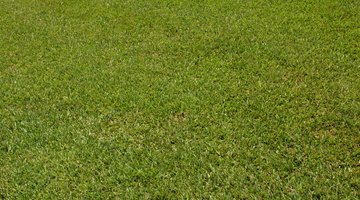Homemade Grass Dethatcher
Thatch can block your lawn from getting the proper nutrients and moisture it needs to grow healthy and green. According to the University of California IPM Agricultural Program, “If your lawn has a bouncy feel to it when you walk on it, thatch is probably building up.

” Dethatching your lawn can be time-consuming, and it can be pricey if you choose to rent a dethatching machine. It is also hard work! There are some simple strategies to dethatch your lawn easily.
Does Your Lawn Need Dethatching?
Are you sure that your lawn needs dethatching? How do you tell for sure? Test the thatch layer in your lawn by digging into the grass with your fingers or a trowel. If it is difficult to reach the soil, you may have to examine further to determine the depth of the thatch layer in your lawn. The University of Missouri Extension recommends "cut(ting) several plugs two or three inches deep. Lift and examine the profile. If thatch is present, it will appear as a distinct horizontal layer of brown spongy or felt-like material." If more than half an inch of thatch is visible on the cuttings from your lawn, you probably need to dethatch your lawn.
Timing Is Everything
Thatch builds up over the long growing seasons, often from over-fertilization and the lack of microorganisms that destroy the dead roots, crowns, and blades of grass. According to the University of Missouri Extension, "Moderate to aggressively spreading species such as Kentucky bluegrass, zoysiagrass and bermudagrass have greater potential for thatch buildup than turf-type tall fescue and perennial ryegrass."
The best time to rid your lawn of thatch is in early spring or late fall, when grass grows the most and can accept more abuse from dethatching without damage.
Sweeten the Deal
The classic method of dethatching requires the most sweat equity. Organic Gardening.com recommends you "scrape out the thatch with a hard-tined rake (special thatch rakes are helpful but not essential)." It helps to cut the handle of an old rake down to a foot or so in length, and perform this chore kneeling.
To break down thatch that has built up, sprinkle sugar on the grass (four pounds of sugar per 1,000 square feet of grass). Sugar works by attracting microorganisms to grow, reproduce and break down the dead grass clippings. This also works with dried molasses. You can purchase dried molasses at outdoor supply stores. Scatter dry molasses at a rate of 10 pounds per 1,000 square feet of grass.
After Dethatching
After you have dethatched, it is not uncommon to have a lawn that looks less than stellar. Don’t panic--fertilize and water your lawn to help it recover from its “face lift.” Reseeding or overseeding at this time is a great way to help patch particularly bald spots in the lawn.
The Drip Cap
- Thatch can block your lawn from getting the proper nutrients and moisture it needs to grow healthy and green.
- Test the thatch layer in your lawn by digging into the grass with your fingers or a trowel.
- The University of Missouri Extension recommends "cut(ting) several plugs two or three inches deep.
- If more than half an inch of thatch is visible on the cuttings from your lawn, you probably need to dethatch your lawn.
- The best time to rid your lawn of thatch is in early spring or late fall, when grass grows the most and can accept more abuse from dethatching without damage.
- You can purchase dried molasses at outdoor supply stores.
References
Writer Bio
Jamie L. Jackson has been a writer for over eight years. She has written press releases, brochures and other marketing material for community organizations and has been published in the LCC Newspaper. She has a B.A. in communication from Alma College.
Photo Credits
- Hemera Technologies/AbleStock.com/Getty Images
- Hemera Technologies/AbleStock.com/Getty Images
More Articles



